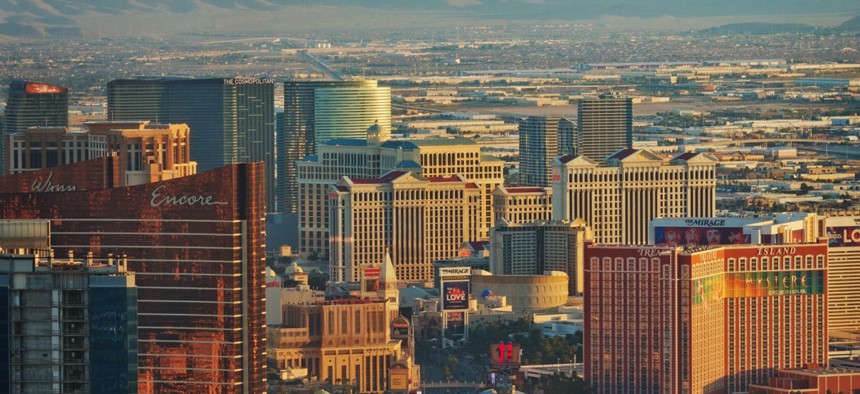Las Vegas Begins Its Smart City Push

Las Vegas
Starting with sensors at 10 intersections, Nevada’s largest city plans to grow out its IoT infrastructure and data-gathering operation to encompass its entirety by 2025.
Las Vegas comes in second only to San Francisco when it comes to open data transparency, according to the annual U.S. City Open Data Census, and now city hall leaders are looking to improve how it gathers and analyzes that information using the Internet of Things.
The city is about 50 days into its pilot of Cisco’s Smart+Connected Digital Platform around 10 intersections downtown, with plans to scale the network of sensors on traffic lights and lampposts to 80 more throughout its innovation district and, after that, throughout that area entirely.
Sensors and cameras count the vehicle, bicycle and pedestrian traffic passing through intersections, and that data is consolidated on the platform’s dashboard for a government operations person’s easy viewing.
“The smart, connected data allows us to continue to mine this platform,” Michael Sherwood, Las Vegas chief information officer, told Route Fifty by phone. “I look at it as: Data is the new oil . . . You can refine it.”
Already Las Vegas has invested $500,000 in smart infrastructure, including intelligent transportation systems and autonomous vehicles.
IoT is just assets, but the real-time analytics of the data it collects could lead to the city remediating traffic barriers to reduce jaywalking or faster emergency response to a suspicious package left at an intersection.
Placing automated defibrillators that alert medical personnel upon use in Las Vegas parks could save lives during cardiac events.
Cisco is able to push a security policy out to all connected devices to defend against a hacker trying to access Las Vegas financial data through a networked traffic camera.
Sherwood’s team is still toying with the combination of IoT functionalities it wants, but the idea of deploying air quality sensors to detect an excessive number of cars idling at an intersection and automatically telling a certain traffic signal to turn green is intriguing to leaders at city hall.
As is the prospect of placing colored LEDs in street lights to turn red as first responders are approaching an intersection. At the same time, the city would be lowering its energy costs through efficiency—with the savings going back into growing its IoT network out.
Many efficiencies will come in other, non-monetary forms like cleaner air, reduced traffic congestion, improved emergency response time and increased tourism to the smart city circa 2025. Las Vegas saw 42 million visitors in 2016 on top of its 650,000 base population.
“Las Vegas has got some very unique requirements based on the number of visitors they get,” said Larry Payne, Cisco senior vice president of U.S. public sector operations. “If we can help them, we should be able to help most cities in the U.S.”
Dave Nyczepir is a News Editor at Government Executive’s Route Fifty and is based in Washington, D.C.
NEXT STORY: Charlotte Is Among 5 Cities Developing More Inclusive Procurement






